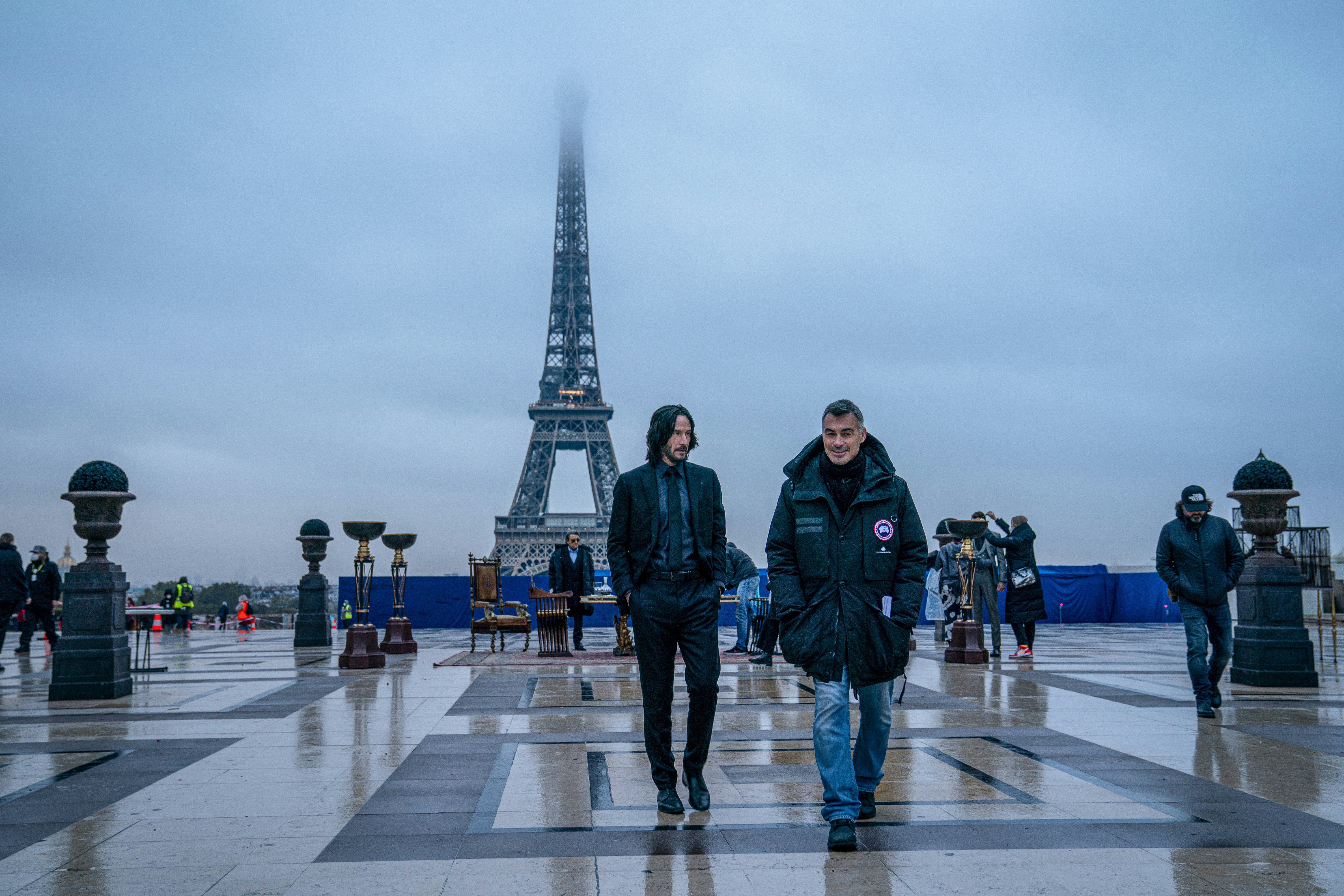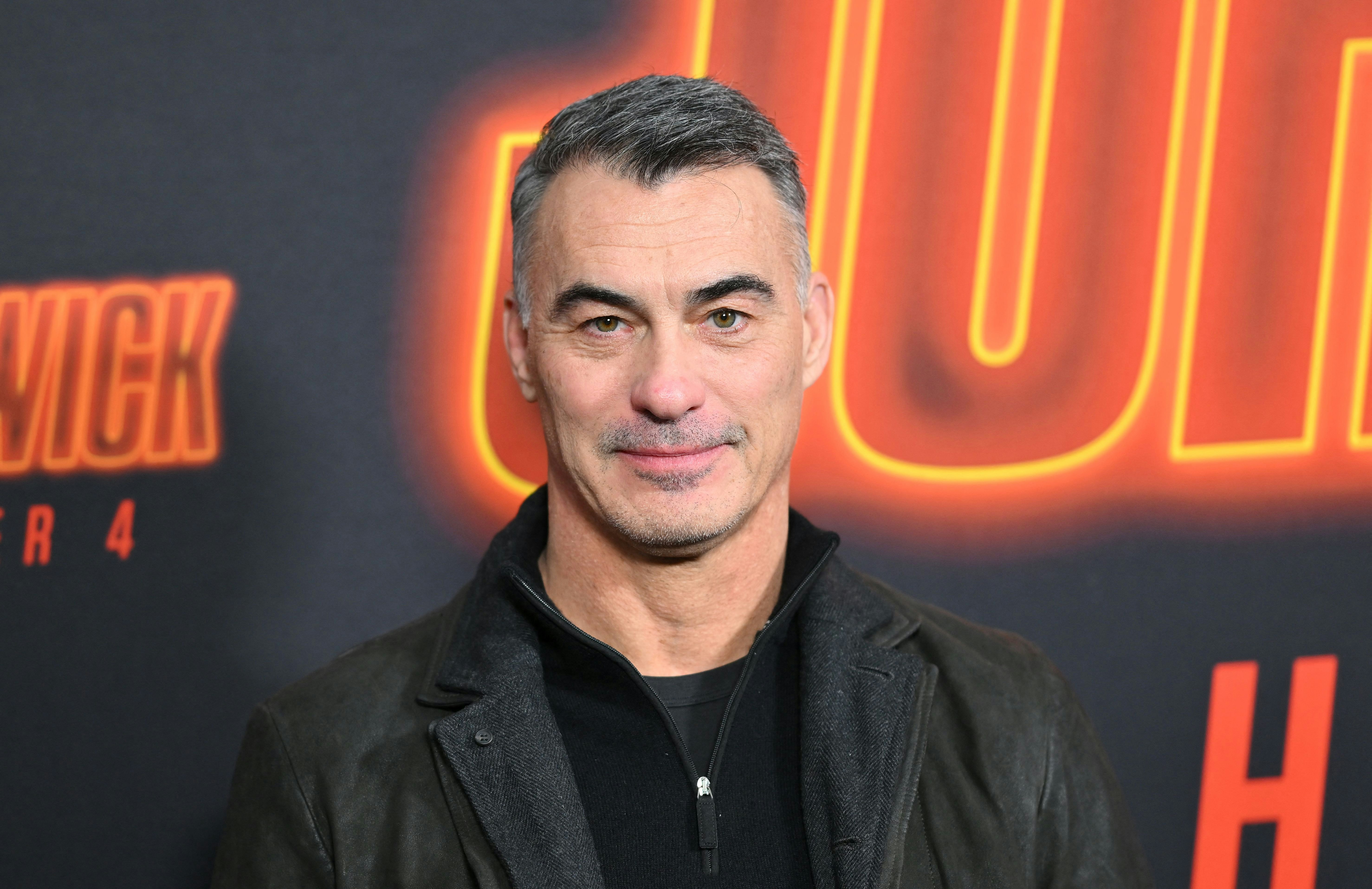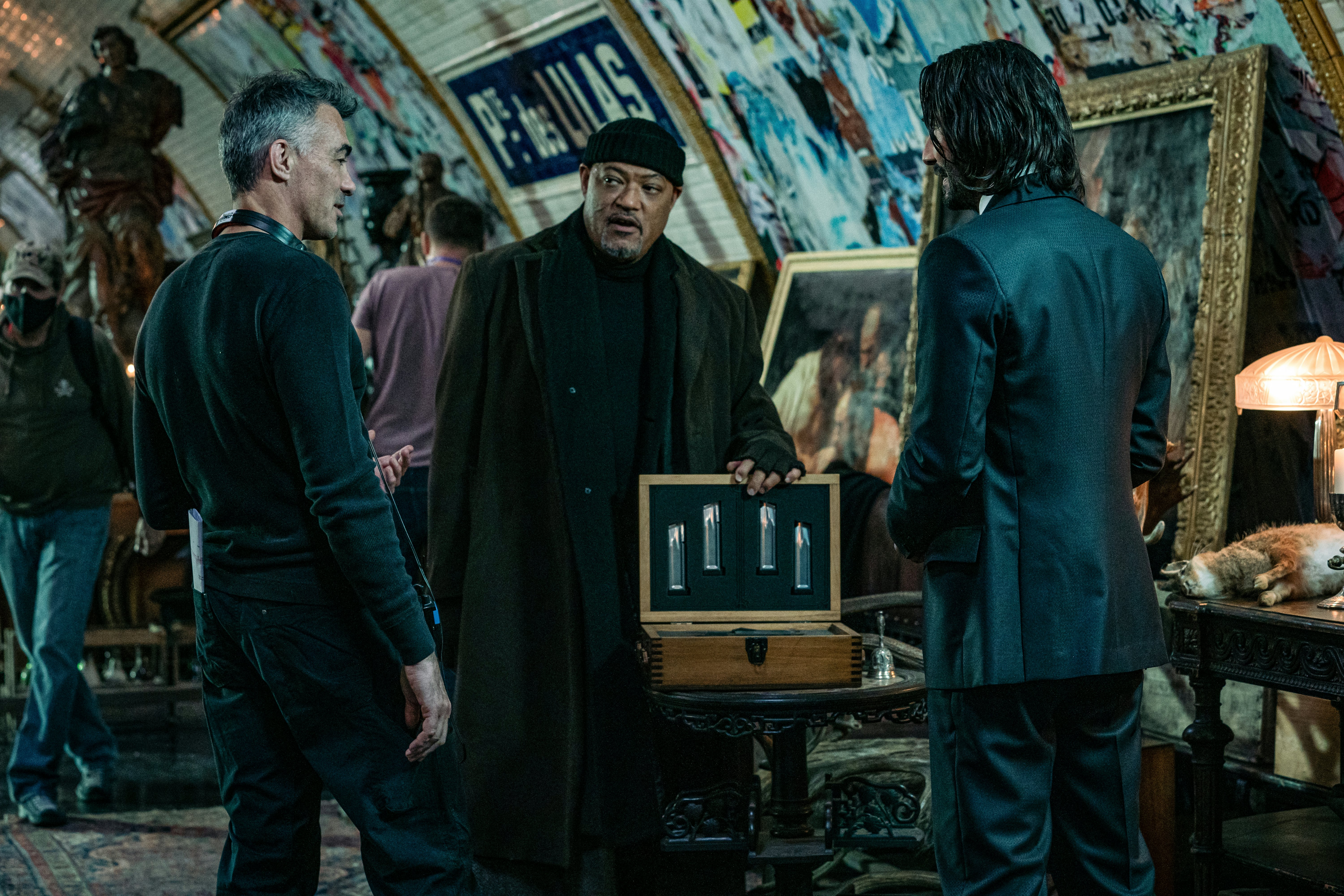
Nearly 10 years ago, while on the set of John Wick, Keanu Reeves’ stuntman-turned-director Chad Stahelski felt fear in his bones. “We were terrified,” Stahelski tells Inverse about the making of the landmark first film in the series. “We didn’t know what we were doing.”
Beset by problems, ranging from budget disputes to midnight shoots in freezing New York rain — and skepticism over whether star Keanu Reeves was still a relevant box office draw — few in Hollywood held high expectations for John Wick, which Stahelski co-directed with former partner David Leitch.
Now, it’s impossible to imagine a world without it. The success of 2014’s John Wick, which followed a former assassin dragged back into business after a home invasion and the murder of his dog, spawned a franchise of R-rated action epics (a rarity in the age of mega-budget superheroes) that only seem to crank the intensity dial higher with every installment.
“Our mantra is, always, ‘A lot of a little.’”
The latest, John Wick: Chapter 4, is an instant classic that expands the scope of John Wick’s underworld universe while delivering a satisfying conclusion for modern cinema’s sharply-dressed assassin. But the road to John Wick: Chapter 4 demanded daily persistence from Stahelski, who had no choice other than to muscle through his fears.
“I’m still terrified when I walk on a set,” Stahelski admits. “The hardest thing about directing is getting out of that car every morning. That’s why you got to love what you do. I love making movies.”
He elaborates: “The loneliness, the anxiety, the pain, the suffering, is all second to having that one moment where you see that magic moment where you go, ‘F*ck, that’s in the movie.’ Millions of people are gonna see that idea that started in your head, and somehow you’ve made it happen through hundreds of people that helped you put it there.”

One idea in John Wick: Chapter 4 that Stahelski downloaded straight from his brain and onto the big screen is a sequence where John Wick survives waves of enemies in a crumbling Paris apartment. With the camera craned high and the lens aiming down, John Wick: Chapter 4 channels the visual aesthetics — and the visceral intensity — of retro top-down shooter games. With a modified shotgun that fires flaming bullets that leave a blazing trail of light, John Wick threads his way through a lethal labyrinth that can almost fool audiences into thinking they’ve got the controller in their hands. It’s simply sublime.
For Stahelski, the goal was to change things up. “Conceptually, we have so much action. Our mantra is, always, ‘A lot of a little.’” While the filmmakers first thought of filming Keanu’s use of the shotgun (codenamed “Dragon’s Breath”) through traditional coverage, Stahelski felt they could do more. “We originally had the whole thing choreographed from the ground,” he says. “I’m like, I got four movies of that. Let’s try something else.”
“We’ll do the video game mentality. Let's just see how long we can pull this off and make it completely blow people’s minds.
These days, filmmakers make frequent use of “oners” — complex scenes that are, or sometimes appear to be, filmed in one take. Stahelski doesn’t love them. “I think they’re interesting when it’s practical, like Oldboy or Children of Men,” he says. “Now that we’re so good at digitally stitching stuff, it’s easier than it was even 10 years ago. But I’m not against cutting. I’m more about pace and tone. If it’s interesting for 10 seconds, I’ll keep you for 10 seconds. If it’s interesting for an hour, I’ll go for an hour.”
In searching for inspiration to spice up a spicy movie, the director found it in a little-known gem titled The Hong Kong Massacre. Released in 2019, the video game emulates retro shooters of the NES era, as well as Hong Kong’s heroic bloodshed pictures of the 1980s and 1990s.
“We saw this great video game from years ago called Hong Kong Massacre,” Stahelski says, adding it had an aesthetic he was looking for. “I like lighting, I like set pieces, I like production design. It can’t just be about the action. It’s got to be about the look. Waterfalls, mirrors, glass, stairs, dogs. We wanted to make a cool pattern with muzzle flashes and colors.” In trying to do something fresh and “kick the action a notch,” the John Wick team decided it was game on. “We’ll do the video game mentality. Let's just see how long we can pull this off and make it completely blow people’s minds.”

Stahelski’s interest in video games isn’t him trying to prove his nerd cred. By his own admission, he doesn’t play many himself. “I’m fascinated,” he says of the medium.
“Video games have their own unique style of storytelling because it’s participatory. That’s fucking nuts when you think about it. There was a time when video games were so ahead of us with action. Assassin’s Creed popped out parkour before it hit the mainstream. Over the last ten years, I think we’ve been back and forth. Video games are borrowing or improving things from feature film and TV, and we’re doing the same. We’re not insular anymore.”
“That’s always the trick with video game adaptions. We’re not adapting, we're actually changing mediums.”
It makes sense, then, that Stahelski’s next directorial effort isn’t John Wick: Chapter 5 (if there is one) but Ghost of Tsushima, a film version of the 2020 samurai game for the PlayStation 4.
“I think we can create something that would be not only true to the game aesthetically, not just making it beautiful, but to elevate it, to go beyond what you guys have seen in the game and the great story Ghost tells,” he says. “Hopefully not just make the game, but make something that’s a synthesis that’s even more than the game. The trick is, how do we bring this all together to be less interactive, more visual? That’s always the trick with video game adaptions. We’re not adapting, we're actually changing mediums.”
For all the overthinking Stahelski does in executing John Wick — and soon, Ghost of Tsushima — everything lives and dies by story. “I know the cinematography is great. I know the characters are interesting. There still needs to be a why,” he says. “Why are we doing it?”
“Let’s give John a conclusion.”
During the press tour of John Wick: Chapter 3 in 2019, Stahelski told the media — including Inverse — that John Wick’s story would never end so long as people see the movies. But with John Wick: Chapter 4, something changed.
“Keanu and I were just sitting around a couple months after John Wick 3 and went, ‘What’s the why?’” Stahelski recalls. “We did each movie independently. We never thought we’d build [to something]. There was no purpose to it. We just made the movie.”
“Just make the movie” was how Stahelski and his collaborators operated from the very beginning. But like a video game that gets harder with each level, Chapter 4 presented the ultimate challenge. “For once, let’s have purpose,” Stahelski says. “Let’s tie everything we’ve built over the last eight years. Let’s give John a conclusion.”
Stahelski concludes, “The ending became the reason, to be honest with you. To wrap everything up and give a conclusive, full-circle vibe. There wasn’t even a choice.”







